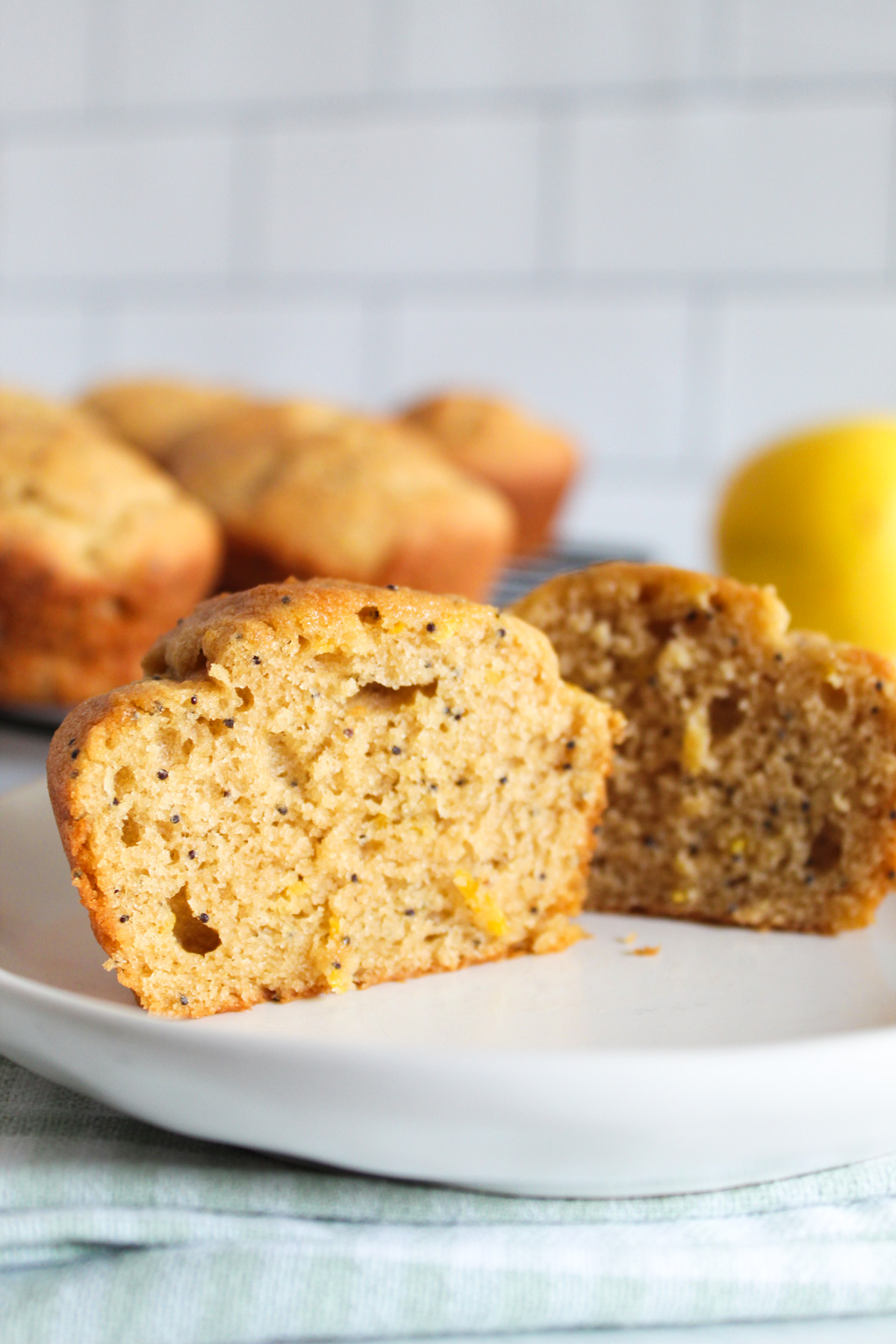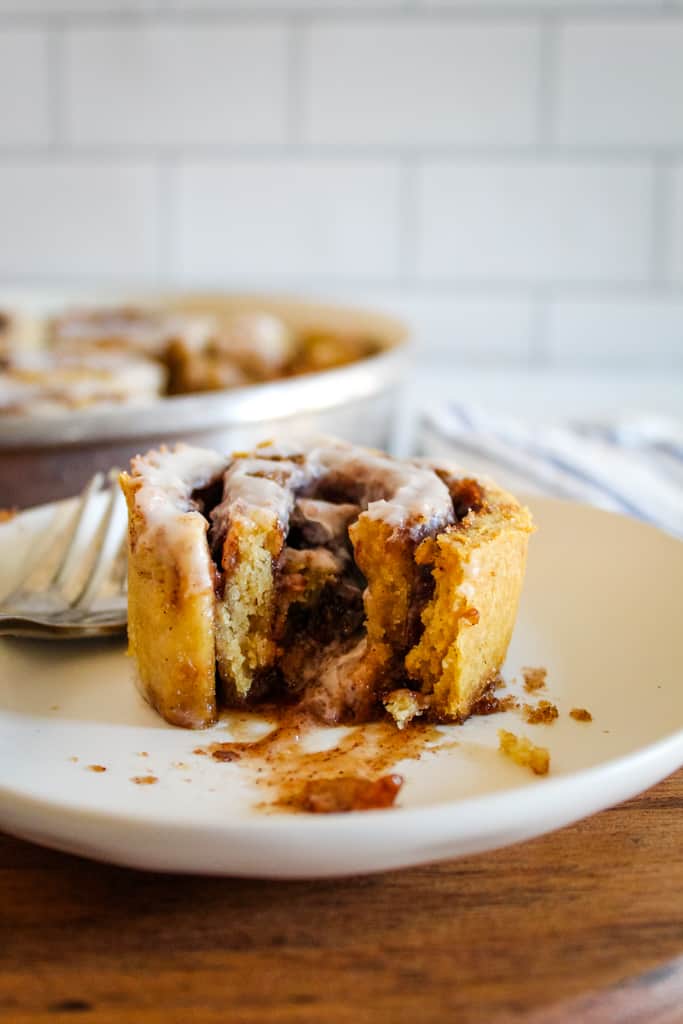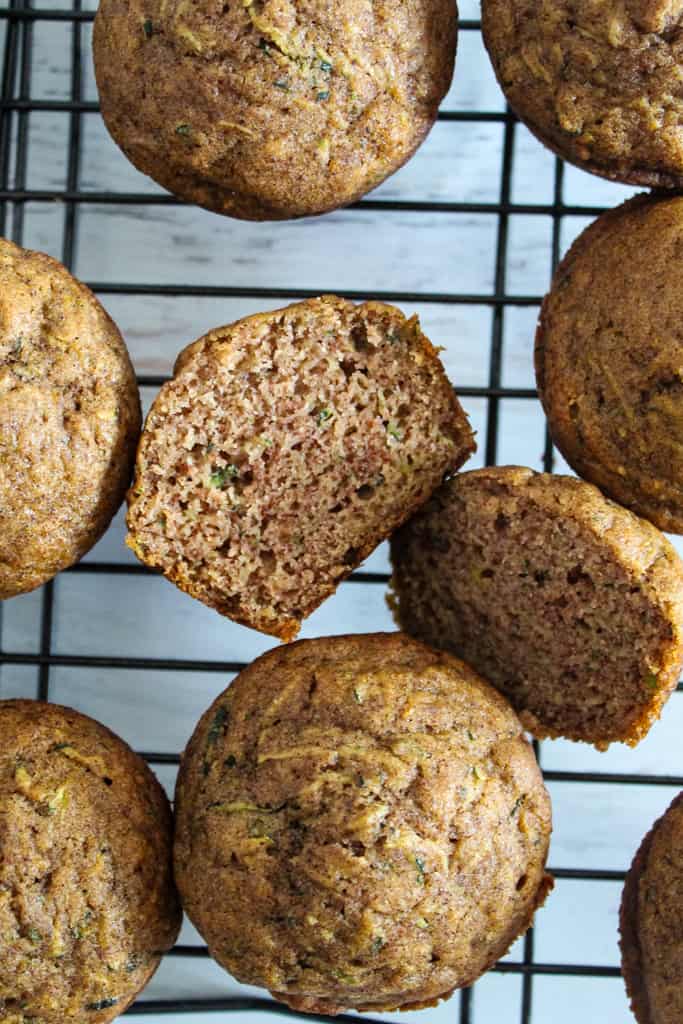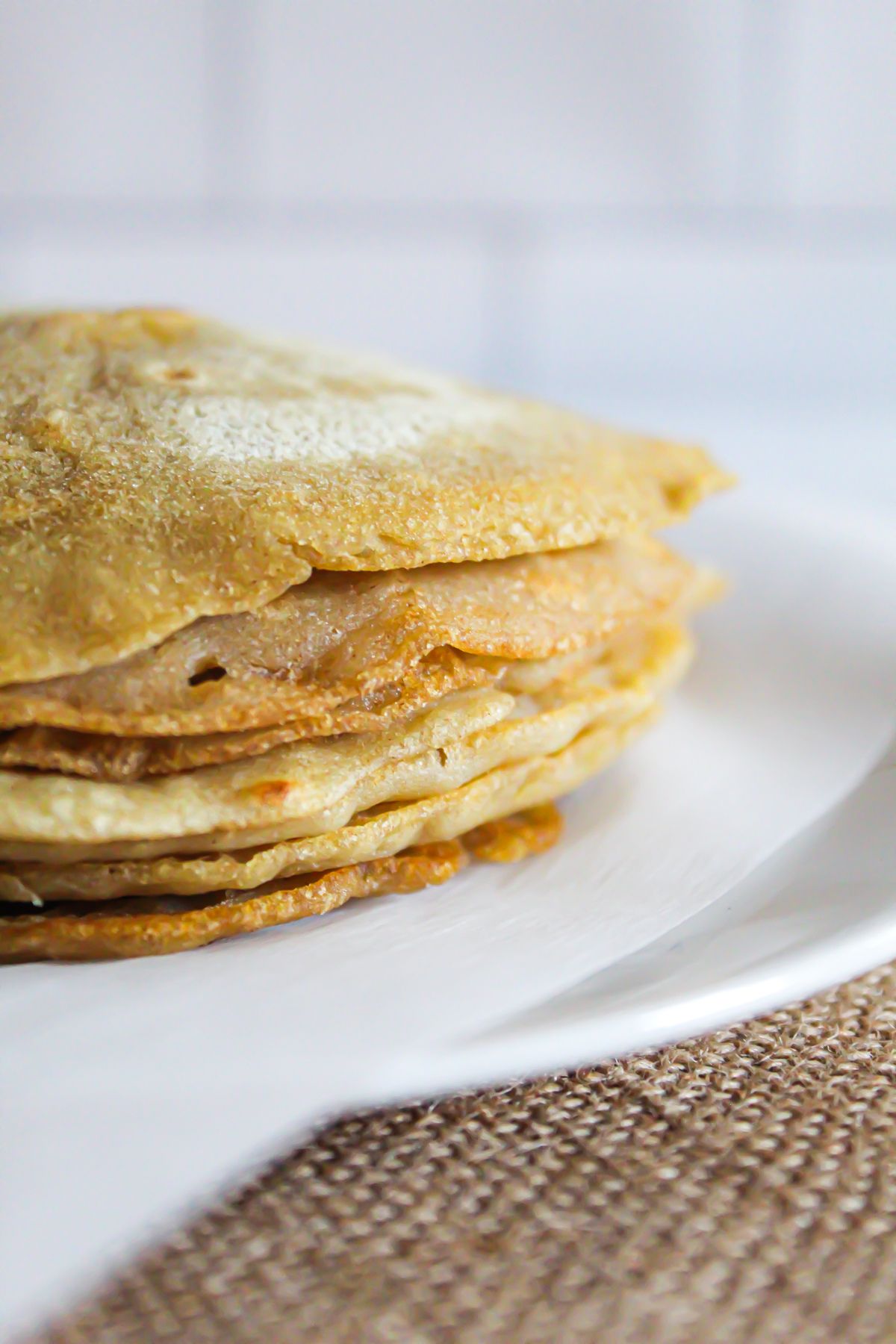These gluten free lemonade scones are extra buttery and full of delicious lemon flavor! With a tender, golden brown exterior sweetened by a touch of tangy lemon glaze, they’re the perfect addition to any breakfast or brunch platter.
This easy recipe delivers soft and fluffy bakery-style scones in just over an hour. Because they are made with real lemonade, these scones are incredibly refreshing and super simple to prep.
Table of Contents
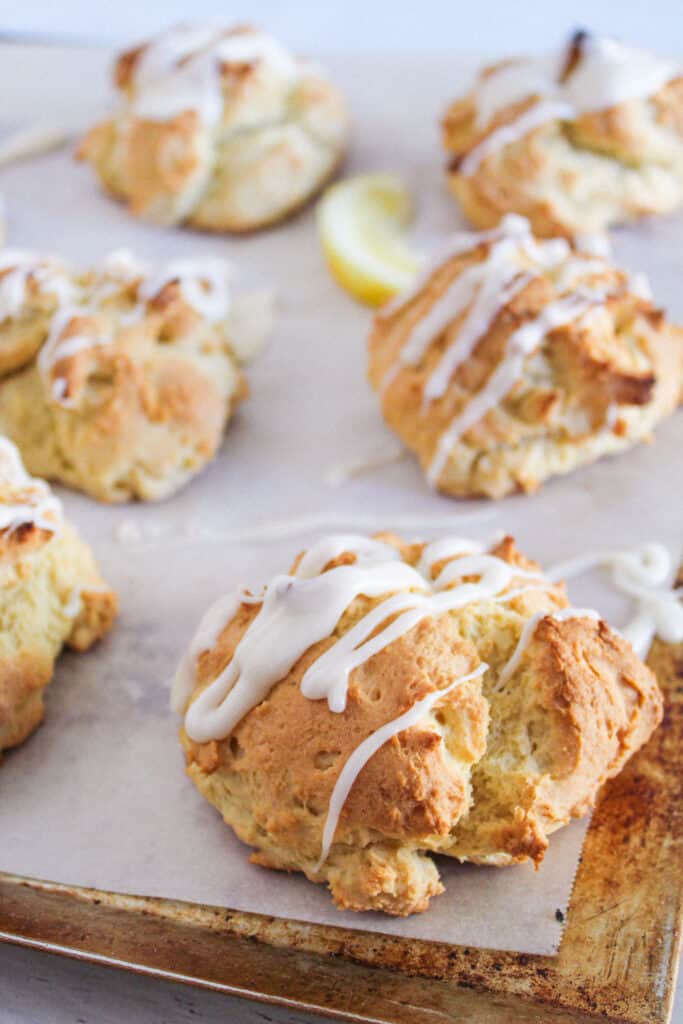
Why this recipe is the best!
Scones are a quick bread, meaning they use leavening agents such as baking powder or baking soda to rise rather than yeast (like these no yeast cinnamon rolls and this blueberry cake). This makes them especially quick and easy to make. Here’s what else I love about this gluten free lemonade scone recipe:
- The scones are simple to prep with just 9 ingredients
- The 3 ingredient glaze adds an extra punch of sweet lemon flavor
- The batter is easy to mix up using a food processor
- It’s both gluten and dairy free
Pro tips for making the perfect scones
With a few pro baking tips, making scones can be a breeze. Here are some ways to be sure your gluten free lemonade scones come out perfect every time.
1. Use room temperature ingredients (except the butter)
Make sure all of your ingredients, with the exception of the butter, are at room temperature for this recipe to ensure they can be fully mixed together. The butter is an exception because it is cut into the dry ingredients to create the tender and flaky texture you want in your scones.
2. Measure ingredients by weight
It is best to use a digital scale to measure all of your ingredients by weight. This method of measuring is more precise than using measuring cups. This is essential to getting the best final outcome of your scones.
3. Let the batter rest for 30 minutes
Give the batter time to rest before baking. This allows the starches and liquids to fully incorporate, keeping your scones light and fluffy.
4. Helpful tools
These are some useful tools that will make prepping your gluten free lemonade scones quick and easy:
- Digital scale
- Food processor
- Spoon
- Parchment paper
- Baking sheet
- Small mixing bowl
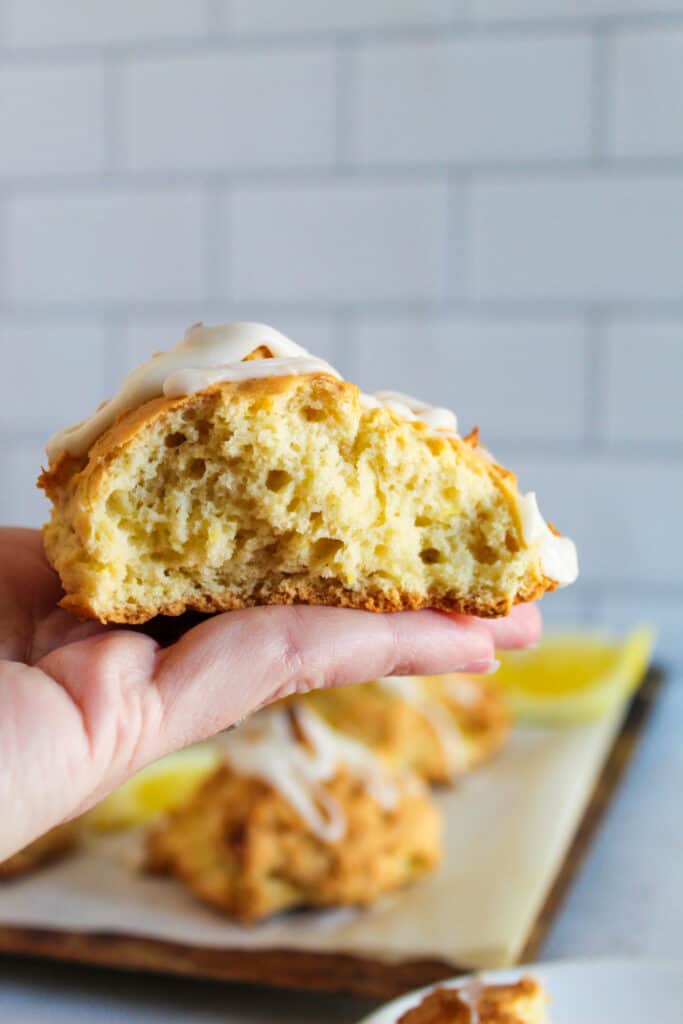
How to make this recipe
Ingredients & substitutions
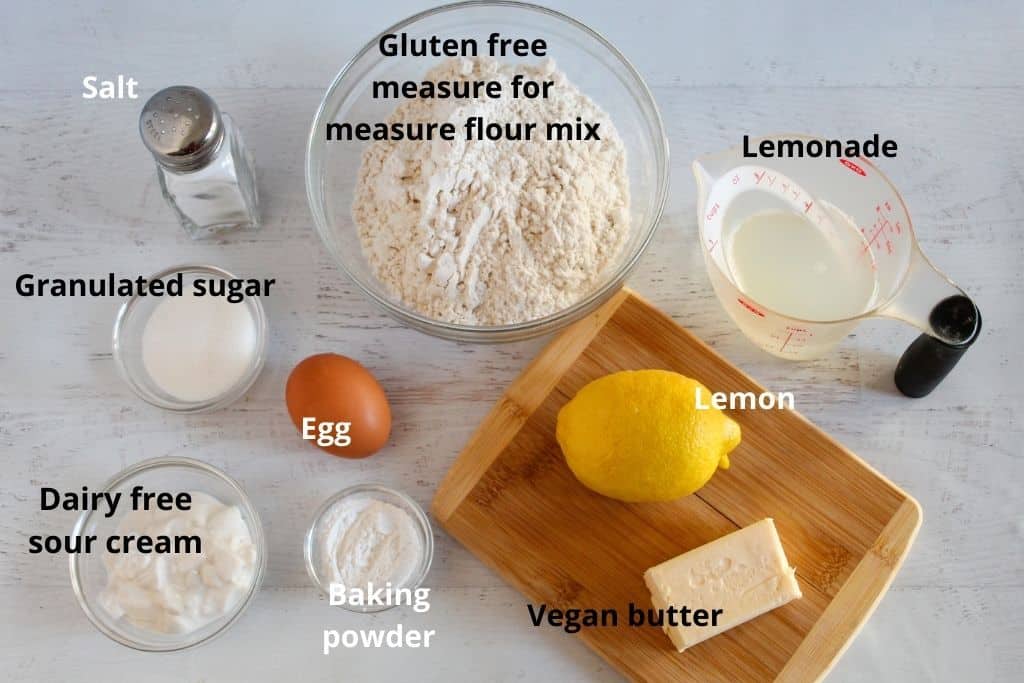
- Gluten free measure for measure flour mix – This recipe was tested using King Arthur brand gluten free measure for measure flour mix. This mix works great in this recipe – I wouldn’t recommend substituting it.
- Granulated sugar – Swerve granular sweetener is a good sugar free alternative that works well in this recipe.
- Baking powder – There is no substitution for baking powder in this recipe.
- Salt – There is no substitution for salt in this recipe.
- Vegan butter – This recipe was tested using Earth Balance vegan butter. Regular butter also works really well for these scones.
- Lemonade – Any brand of prepared lemonade will work great in this recipe. There are no substitutions for the lemonade.
- Dairy free sour cream – I recommend using Forager brand dairy free sour cream for this recipe, but regular sour cream can also be used as an alternative here.
- Egg – For a plant-based egg substitution, JUST Egg brand has an egg-free alternative that works great for these scones.
- Lemon zest – There is no substitution for lemon zest in this recipe.
- Powdered sugar – Swerve confectioners sweetener is a great sugar free substitution that works well in this recipe.
- Lemon juice – Either fresh or bottled lemon juice work just fine. There is no substitution for lemon juice in this recipe.
Making the batter
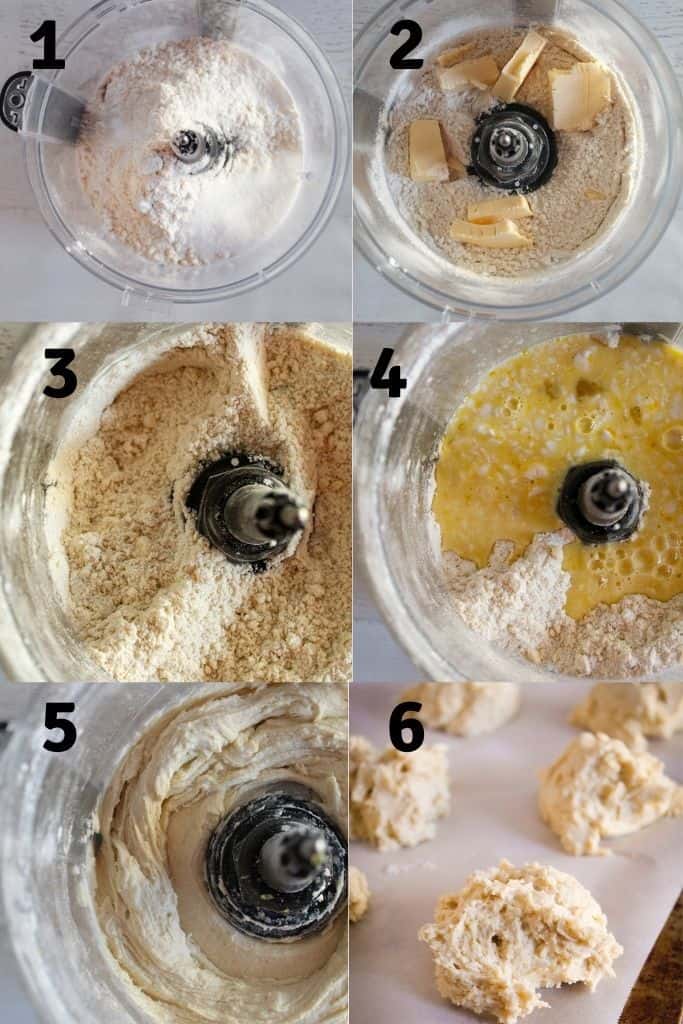
This gluten free lemonade scone batter only takes about 20 minutes to make. First, add the gluten free flour mix, granulated sugar, baking powder, and salt to the bowl of a food processor (step 1 above). Pulse 5 times to fully mix dry ingredients. Then, cut the cold vegan butter into chunks and add it to the food processor (step 2). Mix it on high for about 30 seconds, until the mixture looks like coarse crumbs (step 3).
Next, mix together the lemonade, sour cream, egg, and lemon zest and add it to the butter mixture (step 4). Mix it on high for 30 seconds, scraping down the bowl halfway through at the 15 second mark (step 5). Let the batter rest for 30 minutes – you can leave it in the food processor bowl for this.
Meanwhile, preheat the oven to 450°F and prepare a cookie sheet by lining it with a piece of parchment paper. Once the batter is done resting, drop 8 large spoonfuls of batter on the cookie sheet (step 6).
Baking & serving
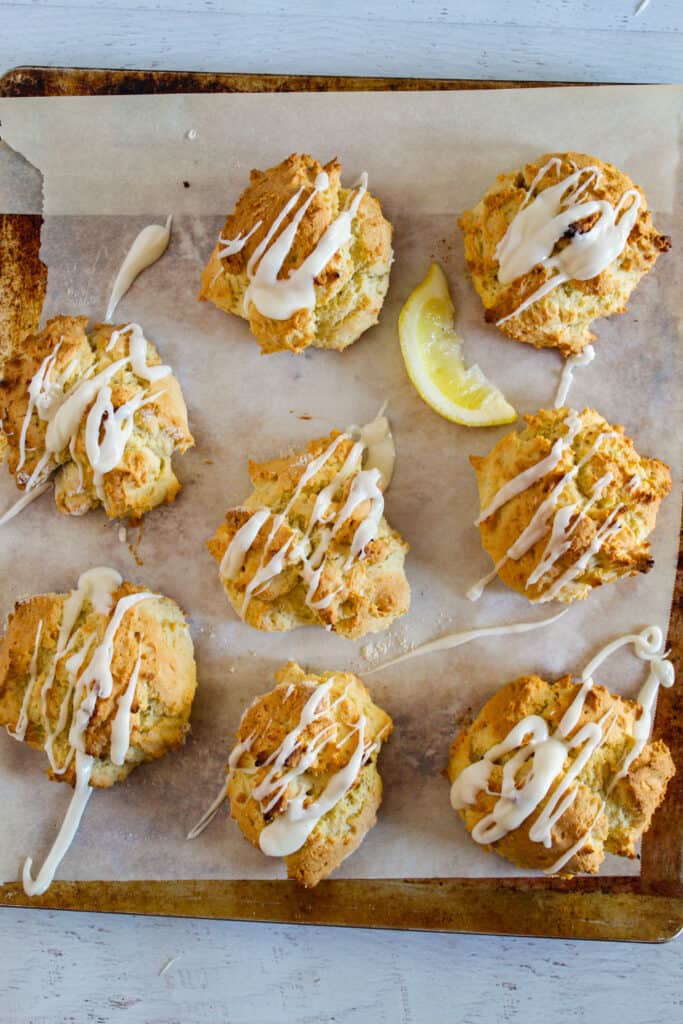
After you have portioned the batter, place the cookie sheet in the oven and bake for 15-20 minutes or until the scones are golden brown and sound hollow when tapped. Remove the scones from the oven and let them cool completely.
While the scones are cooling, you can start on the glaze. In a small bowl, mix together the powdered sugar, lemon juice, and melted butter until the mixture is fully combined. Then, drizzle it onto the cooled scones.
FAQ’s about this recipe
There are a variety of reasons why your scones might turn out dry or dense. Most often, it’s because the dough or batter has not rested the full time. The rest time is important for the batter to fully hydrate.
Another thing that can keep your scones from being soft and tender is not using cold butter. Make sure your butter is nice and cold when you add it to the flour mixture so it will produce soft and flaky scones.
Putting your scones in the oven before it has reached the correct temperature can affect the leavening agent in the batter and cause the scones not to rise. Make sure your oven is heated to the right temperature before putting them in the oven.
Like most others, these lemonade scones are best served the same day they are made. After baking, they can be stored in an air-tight container or plastic freezer bag to freeze for later. To thaw after freezing, allow the scones to sit out at room temperature for a couple of hours before enjoying them again.
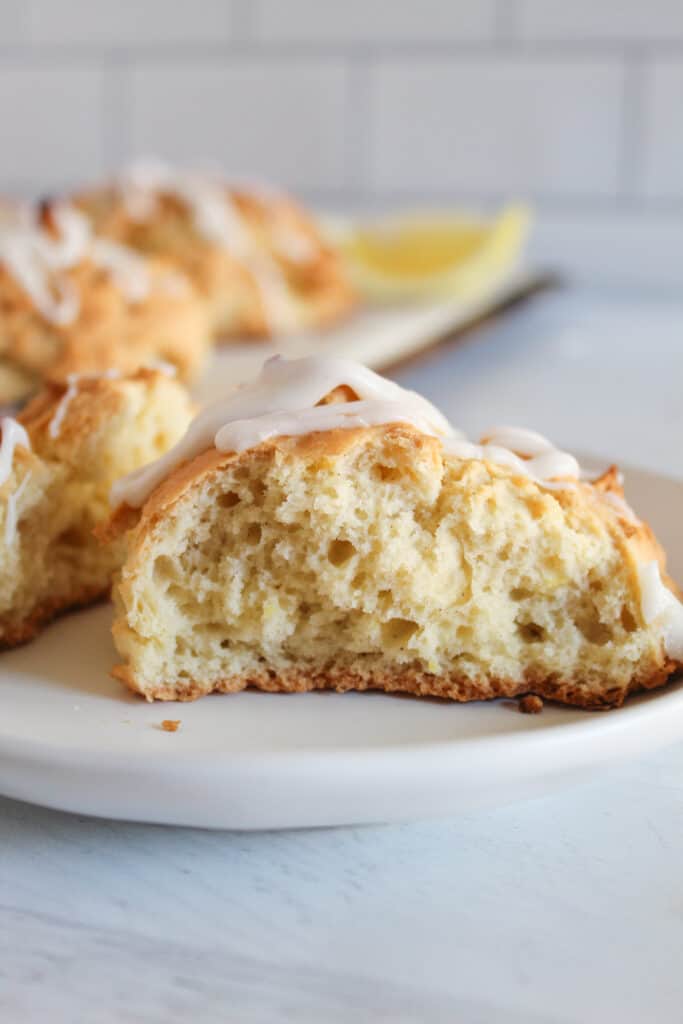
Other recipes you may like!

Gluten Free Lemonade Scones
Ingredients
Method
- In the bowl of a food processor, add flour mix, sugar, baking powder and salt. Pulse 5 times to fully mix dry ingredients.
- Cut the vegan butter into chunks and add to the food processor. Mix on high for 30 seconds, until mixture looks like coarse crumbs.
- Mix the lemonade, sour cream, egg and lemon zest together and add to the butter mixture. Mix on high for 30 seconds, scraping down the bowl at the 15 second mark.
- Let the batter rest (in the bowl is fine) for 30 minutes.
- Preheat the oven to 450F. Prepare a cookie sheet by placing a sheet of parchment paper on it.
- Drop 8 large spoonfuls of batter on the cookie sheet.
- Bake for 15-20 minutes or until scones are golden brown and sound hollow when tapped.
- Remove and let cool completely.
- In a small bowl, mix the powedered sugar, lemon juice and melted butter. Drizzle onto cooled scones.
Video
Notes
- The King Arthur Measure for Measure brand of flour mix is recommended for this recipe.
- Earth Balance vegan butter was used in this recipe.
- Forage dairy free sour cream is the recommended sour cream.
- Use prepared lemonade.
- JUST egg works well for an egg substitute.
